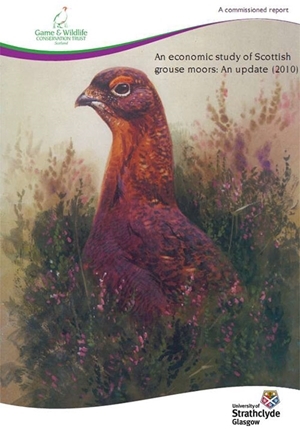 This is the fourth in a series of studies undertaken by the Fraser of Allander Institute (FAI), reviewing the economics of grouse moors in Scotland. Previous reports were published in 1991 and 1996. The most recent was published in 2011.
This is the fourth in a series of studies undertaken by the Fraser of Allander Institute (FAI), reviewing the economics of grouse moors in Scotland. Previous reports were published in 1991 and 1996. The most recent was published in 2011.
The key objective of the study was to assess the economic contribution made by upland estates to the Scottish economy, particularly the contribution made by grouse shooting. However, this review is an opportunity to assess the health and practice of this industry more widely. To this end we have looked at a wide range of other issues relating to both the estates as a whole and to grouse shooting. This includes basic background measures of estate size and location across Scotland, and measures of the current extent and nature of grouse shooting activity.
In addition to the key economic impact measures associated with grouse shooting, we also look at other measures of economic activity, including employment, total expenditure, the amount of expenditure made locally in Scotland and capital expenditure. The report includes analysis of the financial position of the estates, particularly profitability, and we have considered how this investment contributes to the conservation and maintenance of the Scottish countryside. For most of the above measures, analysis is given both for the estates as a whole and specifically for grouse shooting. The report also examines differences by size of estate.
It is also an aim of this study to update information on the contribution of grouse shooting to the Scottish economy and to compare this with the findings of our earlier reports, particularly the 2001 study. Given the period since our last report, the questionnaire used to collect data also looked at the change in a number of key measures over 2005-09, which also allows us to examine trends in grouse activity over this more recent period.
Download (PDF, 744KB)